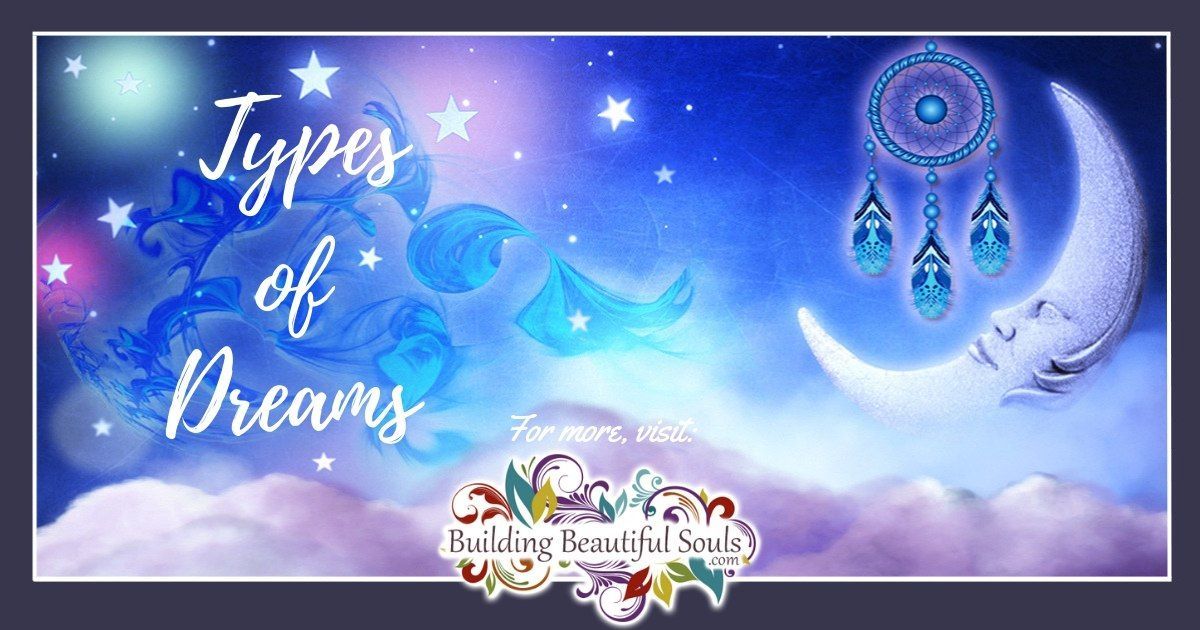Types of dreams; There are just so many of them! Each dream type is an umbrella term describing different dream experiences people have with common characteristics. In other words, two people can have a nightmare while experiencing very different visual, auditory, and physical sensations. What’s more, dream types do not affect dream diversity. Every dream is a personal experience! Yes, one person can dream of a pug eating moon pies, and another walking on the moon. But, both dreams might be external stimuli dreams triggered by the environment where each dreamer sleeps!
Now let’s take a brief look at the history of dream categorization and the 30 most common dream types people experience! Later, for more on dream symbolism, you can explore all the dream material on Building Beautiful Souls!
Types of Dreams: 30 Different Types of Dreams and Their Meaning
- Types of Dreams and Dream Meaning
- Anticipating Minded Transgression Dreams
- Auditory Dreams
- Cathartic Dreams
- Clairvoyant Dreams
- Consolation Dreams
- Censored Dreams
- Compensatory Dreams
- Cosmic-Dreams
- Daily Processing Dreams
- Daydreams
- Deja vu Dreams?
- Emotional Dreams
- External-Stimuli Dreams
- False Awakenings?
- Healing Dreams
- Incubation Dreams
- Inspiration Dreams
- Lucid Dreams
- Mutual Dreams?
- Narrated Dreams
- Nightmares Dreams?
- Night Terrors
- Out-Of-Body Dreams (OBEs)
- Precognitive and Psychic Dreams
- Recurring Dreams
- Sentient Dreams
- Sexual Dreams
- Visual Dreams
- Wish Fulfillment Dreams
Types of Dreams and Dream Meaning

Like many others, you’ve thought about what dreams mean and why you have them. You’re in good company! For centuries, people have felt dreams are meaningful messages from the Higher Self, Cosmos, or Divine. Hence, the birth of dream analysis and interpretative practices. The practice of drawing insight from dreams stems back to ancient Babylonian times.
Classifying dreams is part of dream interpretation. The types of dreams people analyze vary as much as the symbol base they use for analysis. Some people also seek to understand why we dream the types of dreams we experience. The search for answers involves considering environmental, physical, and psychological factors.
In 1900, Sigmund Freud wrote “Die Traumdeutung” or “The Interpretation of Dreams.” He suggests, “Dreams are the royal road to the unconscious.” Freud also argues dreams allow us to see ourselves for who we are. We use dreams to see ourselves through an authentic perspective, and not how others see us.
Freud sees dreams as a true landscape. In this virtual arena, we discover our deepest passions and desires. We explore or realize our religious beliefs and spiritual self. The arena of dreams is where we discover our aspirations, preferences, and morals. The purpose of dream analysis is for developing a full understanding of the self.
To that end, there are many dream types available for analysis. Each dream you interpret will help you learn the most hidden parts of yourself. From what you learn, you’ll find a way to live a more meaningful, rich, and rewarding life!
When making a regular practice of dream study, you’ll realize there are many types of dreams. The most common are prophetic, lucid, and recurring. It is surprising to some people who discover many other dream types exist. Familiarity with the types of dreams is beneficial to your dream interpretive work. The types of dreams you have can point to the messages you receive and why.
Now let’s look at the different types of dreams people experience. Who knows? We might find a dream about moon pies and pugs fits nicely in one of the many categories we explore. Oh, and one more thing: dreams don’t always fit into one category. For instance, it is possible to have a precognitive dream that’s also a nightmare, and vice versa. Although, we all hope that is not the case!
Anticipating Minded Transgression Dreams
(Breaking Bad Habits – Smoking, Drinking, Over-Eating, etc.)

When you experience a dream where you are performing a habit or task you no longer do, it’s an anticipating-minded-transgression dream (AMTD). It’s a fancy way of saying you are expecting the same behavior by habit in waking hours. For example, if a smoker gives up smoking and then dreams about casually smoking a cigarette without giving it a second thought, they’ve had the AMTD experience.
An intense sense of failure or guilt often accompanies the AMTD. The dreamer may feel the guilt in the dream scenario or outside of the dream upon waking. While the dreams may stir up guilty feelings, they are actually an indication of greater success at putting a stop to the undesired habit!
A dash of stress with a pinch of familiarity is the recipe for anticipation dreams! If you prefer, you can substitute a spoonful of guilt for one of the latter ingredients for the same recipe. In the American Journal of Urology and Sexology (AJUS), researchers examine basic dream categories. Among the categories under examination are the “anticipating” variety.
“Anticipating dreams” are one of many types of dreams. These nighttime narratives are dreams encouraging the dreamer to continue sleeping. (As if we need any extra encouragement)! How do these dreams lure us into a sleep state? They encourage us to sleep by creating illusions of wakefulness. The images you see make you feel as if you are awake while attending to tasks.
Imagine you answer telephones for a living. You might see images where you are wide-awake and tending to the phones. You are asleep the entire time you see the images. Anticipating dreams may be the product of stress relating to heavy responsibilities. Feelings of guilt while relaxing instead of working might trigger anticipating dreams.
Just as Anticipating Dreams can be triggered by stress or by feelings of guilt, Cathartic Dreams are a release of stress and burdensome emotions. In the arena of dreams, you are free to let go of desires, fears, and anxieties in a dream narrative.
Auditory Dreams

There are times when you may have a dream where you remember hearing something but no visuals. Having an auditory dream without imagery is possible. The auditory dream may also be accompanied by physical sensations and smells. These dreams are most common for people who are blind at birth.
Auditory dreams can also occur when you experience hypnagogic hallucinations, which is the period where you transition from being awake into sleep. A variety of strange sounds occur during the stage. People have reported hearing someone calling out to them by name, the ringing of a phone, alarm, or doorbell, and some people hear the sound of a running fan, water, or white noise as well.
Others experience what’s called “exploding head syndrome,” during the hypnagogic stage where they hear loud, uncomfortable sounds like knocking, banging, and explosive noises. If you’ve ever experienced this type of sound, you could swear everyone in the house would have heard the noise too. But, upon waking, you’ll discover you are alone in having the auditory dream experience.
Sometimes the sounds involve bits of speech which make sense only to the dreamer. When the dreamer awakens and reiterates what they dream of hearing, it no longer seems logical. This stage of sleep may also result in narrated dreaming where you hear someone telling you what’s happening, or you think you are talking to yourself.
On occasion, the auditory dream may trigger inspirational dreams too, especially if pulling out fragments of poetry, prose, or music from the dream realm when you awaken. Many artists, writers, and musicians of creative mind have used dreams as a source of new material.
Cathartic Dreams
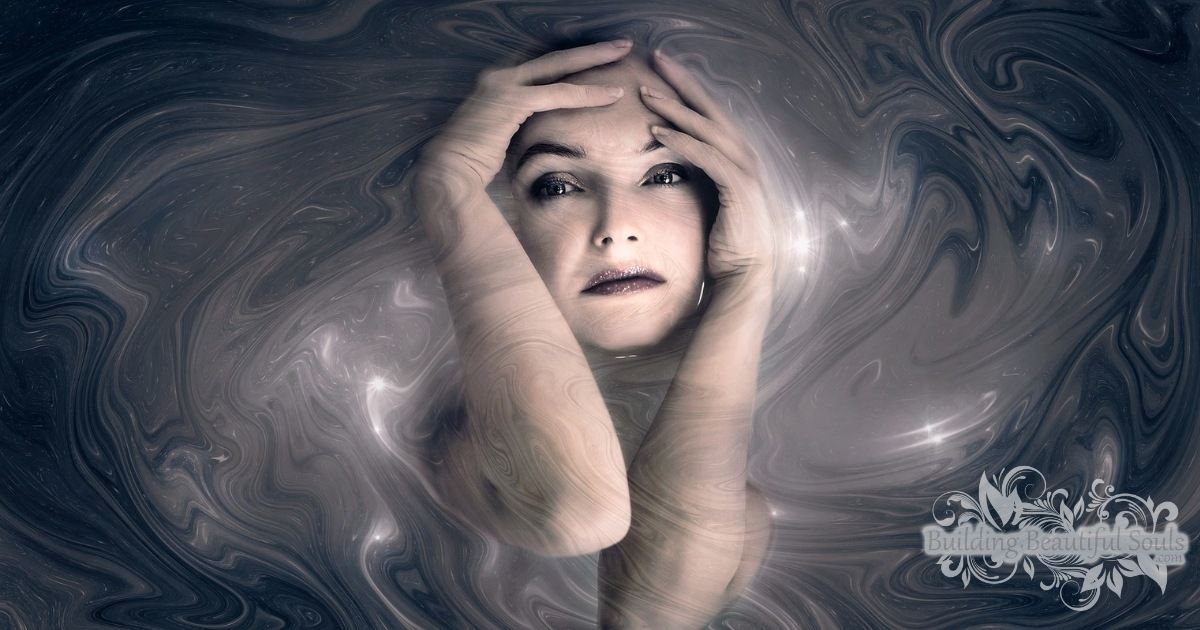
Cathartic Dreams allow you to feel your true feelings. These dreams deal with emotions bubbling over to the point where you think you might lose control. In a Cathartic Dream, you may face what is causing your ill feelings head-on. It allows you to put someone in their place or rectify a situation that has been causing you long-term grief. Hence, it is here Cathartic Dreams become problem-solving dreams.
When having Cathartic Dreams, it’s an emotionally healthy experience. Look at is as a means of ridding yourself of weighty or toxic emotions. The word catharsis originates from katharsis, a Greek word meaning ”to purge, cleanse, or purify” or “to free oneself of guilt, shame, or other negative emotions.”
A cathartic night-time narrative is an excellent example of how your higher mind or subconscious uses the dream realm to experiment with emotional conditions. You can explore an array of emotions through virtual expression and experience.
What’s most important about this type of dream is how you gain greater insight into your feelings: The reasons for the feelings and what you need to learn from them. Life-changing insights are the result of dreams featuring a cathartic theme.
Clairvoyant Dreams

Clairvoyant dreams occur when psychic abilities and dreams are working in unison. When having a clairvoyant dream, you can see things with your sixth sense. You’ll view conditions as they are occurring in real time in the waking world.
The imagery appears like a dream narrative. Upon awakening, you remember everything you see. Later, you find out your dream events are real events occurring nearby as you slept.
Clairvoyant dreams predict the immediate moment. Precognitive dreams provide information relating to future events. Intense real-world connections trigger clairvoyant dreams. Relationships have the same power to trigger dreams with clairvoyant information.
You might dream of your family home or siblings living at a distance. When you connect with someone on an intimate level, you might have clairvoyant dreams. These dreams are broken or fragmented. In addition, you’ll see pictures moving fast and switching to different imagery.
Consolation Dreams

The word “console” stems from the French word consoler meaning “to offer comfort,” and from consolari, which is Latin for “offering cheer, encouragement, and solace.” The purpose of such dreams is to provide you with relief and peace of mind for whatever feelings and experiences the central theme of the dream reveals. As such, Consolation Dreams stemming from anxiety are the mind’s way of soothing the dreamer.
Dreams and Dream Reports in the Writings of Josephus: A Traditio-Historical Analysis. In the The Dream Encyclopedia, the subject of Consolation Dreams is referred to as dreams which ease your anxiety. A Cathartic Dream can easily fit into this dream category in many instances because such dreams seek emotional resolution.
If you go to bed feeling ill, you might dream of your mother nurturing you and bringing you a hot cup of soup or some tea and honey to soothe a sore throat. The nurturing imagery consoles you and serves to ease your mind temporarily. A consolation dream might also present you with imagery from someone who has passed away.
Here, you gain comfort from seeing the person happy, or you feel better because you can reconnect with the person in the dream realm. Dreams of the dead can provide you with closure, a chance to say “goodbye,” or to make amends with the one who has passed, all within the dream environment.
Please Note: Some people feel contact from the deceased in the dream realm is actual communication and more than the mind trying to console you.
Censored Dreams

Censored Dreams are also a category of dreams appearing in the AJUS. These visions are dream narratives involving painful experiences in your waking life. The narratives appear in manageable symbols. Painful experiences are something the subconscious is looking to work out.
Your mind censors the dreams. The higher mind does this to ensure you can remain asleep without interruption. Imagine being rudely awakened with every upset you encounter in dreams! You’d be a walking zombie in a day!
With censorship in place, you can relieve the painful waking experiences by working them out in the dreamscape. Later, you can deal with the painful imagery in your waking life too. As a result, the narratives may have more meaning you can uncover through analysis.
When experiencing censored dreams, some researchers suggest the mind will analyze situations, conditions, and feelings and determine one’s comfort level dealing with a specific subject. If there are some significant social taboos or you feel uncomfortable with something in your waking life, the mind censors it before approaching the issue in the dream realm. The same goes for thoughts rising from the unconscious into your consciousness: The thoughts and feeling may undergo censorship first.
Censorship in dreams may involve avoiding specific issues, feelings, or experiences until you are ready to deal with them or presenting you with only part of a problem through “acceptable” symbols.
Please Note: Some dreamworkers and other researchers like Erich Fromm believes there is no censorship of dream content whatsoever.
Compensatory Dreams?

Carl Jung writes about compensatory dreams, where such experiences are one of three dream categories (the other two being (a) reactive and (b) perspective. The reactive dream is the reproduction of real-life trauma in the dreamscape. Jung asserts the majority of one’s dreams experiences fall into the category of compensatory dreams. These dreams can prove positive or negative (Fun Fact: Also called “deflationary” and “reductive.”).
Edgar Cayce, the Sleeping Prophet, also spoke of compensatory dream experiences. He explains how these dreams are the result of real-world experiences which present in the opposite extreme in the dreamscape.
Sometimes called contrary dreams, one example is a nun dreaming of being a prostitute. These dreams allow you to explore your shadow side or nature. You can complete the exploration without getting into real-world difficulties in doing so.
These dreams allow you to also deal with or experience situations from a safe distance. Having a contrary dream lets you manage the emotions associated with them. Contrary dreams happen for the exploration of ideas opposing your own understandings or views without enduring extremes in physical reality.
Another typical example is where you are in a public place, and you realize you are the only one not wearing any clothes! (What? where’s the censorship dream when you really need one?) You have a slew of feelings when you recognize your nudity, including shame and fear.
Now, take this imagery and turn it on its head. The dream is a suggestion in your waking life you’re underexposed or feeling unnoticed by those around you. The goal then and message of such a vision is to find the middle ground between no exposure and overexposure in your waking life.
Cosmic Dreams

Cosmic Dreams, Epic Dreams, and Great Dreams are all titles for the same dream experience. The narrative is one in where you have a dream having life-changing implications. Great dreams may show you meeting up with a god, goddess, or major dream archetype.
Images are so vivid and moving, they are impossible to forget. These types of dreams often gain rich meaning when alluding to cultural myths. Most importantly, the Cosmic Dream leaves you with a memorable feeling long after you awaken from it.
It’s common for a dreamer to remember a Cosmic Dream years after the initial event. Moreover, the dream might end up offering several unique interpretations over the course of time. It’s as if the dreamer’s life experiences make the Cosmic Dream message even more meaningful than the original interpretation of the dream the first time it occurs.
Artemidorus Daldianus produced the Oneirocritica during the second century A.D. It’s a body of work on dream interpretation. The collection consists of five books he wrote during his lifetime on the subject. In his writings, Artemidorus classifies dreams and offers tips on dream interpretation methods.
It is Artemidorus who wrote of dreams in two main categories including enhyphnion (meaningless) and oneiri (meaningful) dreams. Of those dreams that hold meaning, they fall into five categories, one of which are “cosmic dreams.” His explanation of the Cosmic Dream differs from the Epic Dream definition.
Cosmic dreams, according to Artemidorus, are those with cosmic or celestial imagery (stars, planets, the universe, etc) are dreams which foretell of cosmic changes or outcomes. Such outcomes include things like the movement of planets, eclipses, or activities affecting the Sun and Moon. He also asserts cosmic dreams are taken literally as they require little to no interpretation.
Daily Processing Dreams

The daily processing dream category is exactly how it sounds. Your dream scenario involves real-life situations, characters, or settings. You’ll see real-world imagery as if you are awake and experiencing it. The terms daily processing dreams and problem-solving dreams are interchangeable.
The dream may not be symbolic. But, it might be a problem-solving dream where you address issues you couldn’t manage in your waking hours. Sometimes, through dream incorporation, external stimuli will break through into a dream.
This dream incorporation is happening while you sleep. They can occur when you play background music or if you leave the television running when you drift off into dreamland.
Imagine falling asleep when you are watching cops and robbers where there are sirens. Next thing you know, you’re dreaming of driving your car on the highway. Then you’re getting pulled over by a police officer in your dream narrative! (Hope it’s not precognitive dreaming going on here)!
Do Daydreams Mean Anything?

Daydreams are different from the dreams you have when you are sleeping, but these dreams are perfect for categorization. A person spends 70 to 120 minutes daily daydreaming. The more intense the daydream, the deeper one enters the imagined fantasies. Deepak Chopra suggests daydreaming, and reflection on one’s imaginings is like tapping into an endless source of creativity.
Daydreams are a means of exploring the imagination and working out issues through the means of imagined rehearsals. Daydreams can also help relieve anxiety, especially when using visions to mentally prepare in advance for an upcoming situation or condition. Some experts suggest daydreamers are better at visualization and engage in lucid dreaming with greater ease. So, the next time someone catches you daydreaming, tell them you’re just running a few productive rehearsals through your mind!
What other benefits can you derive from losing yourself in a few imaginative visions during your waking hours? Consider the following:
- Daydreaming results in greater problem-solving skills.
- Those who daydream have better empathizing abilities.
- Individuals who daydream often have a higher IQ.
- Those who have day visions have longer attention spans.
- Daydreams expose you to a virtual playground where you can explore new ideas before implementation.
Deja vu Dreams?
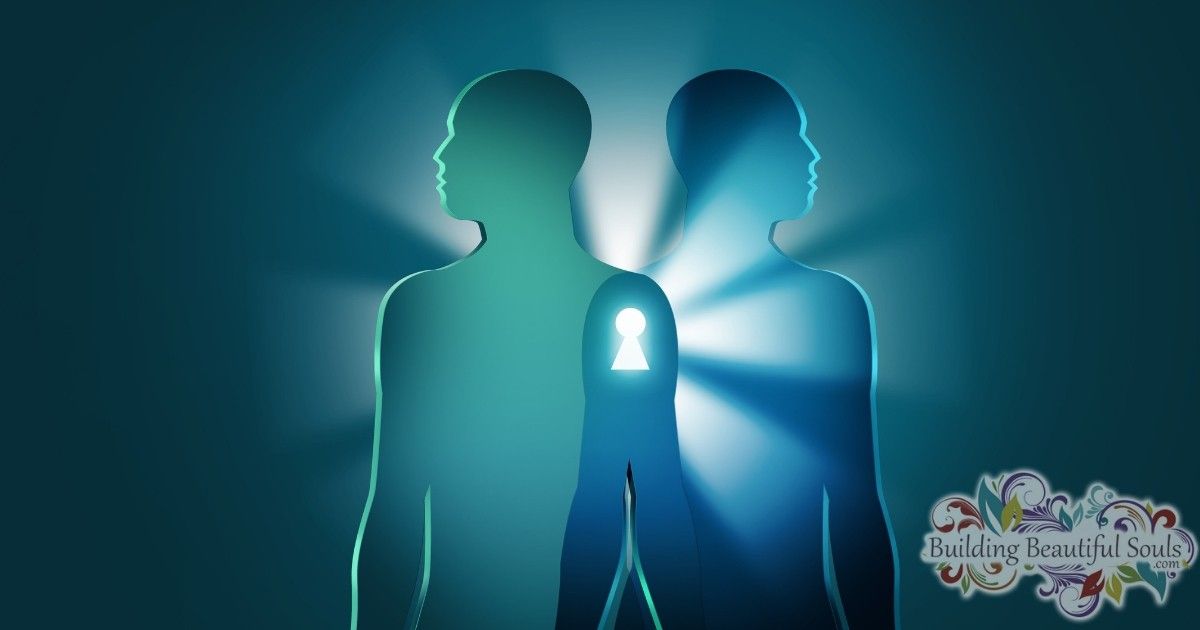
Many dreamers question, “Can you have Déjà Vu dreams?” Déjà Vu Dreams occur when you dream of a person, place, or thing. Then, you encounter the person, place, or thing you’ve seen in dreams.
The experience or the eerie sense of Déjà vu, meaning “I’ve seen it before.” As a result, these types of dream might fall under the category of precognitive dreams when they evoke the sensation of having experienced the event. If so, you predict upcoming events with success.
You can also have a sense of deja vu within a dream narrative where you see something you feel you’ve encountered in the past. Some people link deja vu experiences to reincarnation and past life experiences reemerging in one’s consciousness during this lifetime.
Scientists call déjà vu in dreams an experience of “hyperfamiliarity” as you feel super-familiar with a subject, person, object, or place. Explanations for this “hyper-familiar experience” include forgotten memories, mistaken identification, and false memories.
Intriguing Fact: Many instances of déjà vu are experienced in someone with temporal lobe epilepsy, leading researchers to believe déjà vu experiences are the product of how the mind translates experience versus an actual experience in one’s waking life.
Emotional Dreams

It might surprise you to find that not every dream evokes an emotion in the dreamer. Some dreams allow the dreamer to observe a scene and emerge from the dream without recalling having any emotional response whatsoever. Other dreamers are highly emotional while evoking feelings of joy, happiness, deep sadness, or anxiety. Here’s a fun fact: Scientists have found most of our dreams evoke negative emotions.
It’s clear the content of the dream will determine the emotion the narrative and imagery evoke. Dreams occur with linear, uninterrupted narratives and fragments that can shift from one scene to another so what seems like a series of dreams in one sequence can have you running through the gamut with emotions!
One minute you’re dreaming of petting a cute little baby sheep on the farm, and the next minute your running through a wild, thick, dark forest with the bad (and always hungry) wolf is chasing you. Here you go from comfortable and happy to terrified in the matter of a change of dream scenes!
Of course, your emotions don’t always match what you see in dreams either, so you can’t always take dream experiences literally. You might cut your finger in a dream and for whatever reason find it hysterically funny. Or, ten people could be surrounding you and laughing joyously all while you’re are balling your eyes out. With such dreams, a literal interpretation might not always be so easy to deduce.
Finally, the feelings you have when you awake from a dream might match the feelings within the dream context or, you might feel the exact opposite. Every dream scenario is original and unique to you. What’s important to remember is the dreamscape is the ideal place to explore emotions of all kinds. Some exploration results in symbolic meanings while others result in literal messages. You’ll know what a dream means by sensing what resonates with you.
External-Stimuli Dreams and Dream Incorporation

Dream incorporation, external-stimuli dreams, and vigilant dreams are different names for the same experience. External-stimuli dreams occur when some stimuli from your sleeping environment enter your dreams. Yes, any noise, TV show, music or other environmental stimuli can show up in your dreams! The detects and integrates the stimuli into the dream scenario.
Imagine the irritating “BEEP,” “BEEP,” “BEEP,” from a digital alarm clock coming through a dream as “MOM,” “MOM,” “MOM!” It is like a child trying to wake their mother! At that point, both sounds might be equally annoying when all Mom wants to do is “SLEEP,” “SLEEP,” “SLEEP!”
The easiest way to avoid the external-stimuli dream is to sleep in a room with the lights off and no sound in the background. Just know that this cannot prevent every dream triggered by the external environment (Especially if your pet cat Fluffy goes on their nocturnal spastic run through the house! Don’t be surprised if you dream of your beloved pet).
False Awakenings?

False awakenings are perfectly described and relate to an incident where you believe you have gotten up and you are going about your daily routine, but you are really sleeping. It’s the kind of dream scenario you’ll often see depicted in horror movies where a character is in a dream and then wakes up for what seems like the second time when really it is the first time they are awakening.
The false awakening scenario is sometimes called the “dream within a dream” or the “double dream”. It is common for this type of dream to happen after someone has been lucid dreams or cognizant of dreaming. False awakenings are sometimes a pre-lucid event. In other words, when the false awakening occurs, you’ll start to wonder if you are sleeping and dreaming while being aware of dream content. Some studies indicate false awakenings, and the lucid event goes hand-in-hand or will, at a minimum, occur within the same night and sleep session.
There is more than one kind of false awakening, however. The second type is also called a continuum. For the continuum to occur, you’ll have to doze off while in the midst of doing something. You then have a false awakening where you think you are awake and acting when you are actually still sleeping. Now, this is when you’ll find yourself thinking about the attractive face of Freddy Kreuger from the famed Nightmare on Elm Street films.
One method of determining a false awakening from being awake is noting things out of place or part of the scenery being different than it is in real life. Counting numbers (like how many fingers you have) or reading text is difficult as it is too blurry to see or hard to recall once you awaken are means of identifying the dream state versus being awake.
Healing Dreams

Healing Dreams or prodromal dreams trace back to Ancient Greece. These dreams have narratives corresponding to healing. The visions might hint someone is ill. The illness might be your own, or the dream may refer to someone else.
Some healing dreams suggest a path of investigation when assessing your health. Other dreams might tell you the most straightforward way to heal a condition. Please note; You should not replace traditional medical care with dream insights. Always consult with a qualified physician before making important health decisions.
A prodromal dream may present imagery with overemphasis. Whatever you see that’s “larger than life” is the area requiring attention. A dream narrative with a healing theme features symbolic and literal imagery.
First, imagine you have a “direct healing” dream. (It is a direct dream because you get one-on-one advice from someone or something in the dream. There is no agent or mediator between you and the source giving you information). Your dream begins with you standing in the downstairs hallway of your childhood home. You open a door in front of you. There you’ll find a shaman sitting on the floor in the lotus position. He touches your left cheek and speaks. “You have a hole in your aura.”
Now, consider the difference between direct and indirect healing dreams. Indirect healing dreams provide you with symbolic information. For instance, you might see images of contorted joints signifying arthritic conditions. The same imagery might signify immobility or difficulty moving. Since these types of dreams relate to potential pain or illness in the dreamer, the imagery is vivid.
Incubation Dreams

Dreams are often spontaneous and seem random. But, is it possible to trigger dreams? Can you make dreams happen or cause them to occur with more frequency? What if we can answer some of our most pressing questions through dream work?
In “The Dream Encyclopedia,” James R. Lewis and Evelyn Dorothy Oliver explain dream incubation. The Ancient Mesopotamian, Egyptian, Grecian, and Roman cultures were using dream incubation. Across cultures, there are some identifiable differences in the practice. Dream incubation always involves the same result. The practice was used to have meaningful dreams. These dreams were to contain messages in which the dreamer can gain insight.
Staging incubation settings occurs through ritualized practices. Dream incubation practices may have got their start in Mesopotamia and Egypt. Other cultures later adopt the practice. Yet, incubation practices demonstrate how ancient peoples saw dream messages of major importance.
The practice of dream incubation involves preparing for dream work. The work involves readying for a sleep session; During the session, you hope to receive an answer to a question. Otherwise, you hope for a divine message. To be close to the patron deities, many slept in the temple of the gods of their choosing.
In ancient Greece, people would go to the temple of Aesculapius. It is in his temple they would sleep and petition him for answers in dreams. Why? Because he is the God of Physicians and Medicine. As a result, they were appealing to a patron deity for answers in dream narratives to issues relating to health and well-being.
Dream incubation is a ritual practice. A dreamer wears all white to enter sleep in a pure state. The questioner does not eat certain foods before the incubation period. Upon awakening, a priest/priestess interprets the dreams. The priest/priestess is the only person with training in dream interpretation. Dream incubation continues today by modern dream interpreters seeking life insights.
In “Dreams and Dream Reports in the Writings of Josephus: A Traditio-Historical Analysis,” the author explores another angle. Robert Karl Gnuse examines the potential for unintentional incubation dream. What he writes about is the event where you sleep in a sacred space without knowledge or ritual. Yet, you still experience dream imagery providing you with life-changing insights. He references the biblical Book of Genesis when Jacob sleeps at Bethel. It is here he falls asleep on a sleeping stone on holy ground.
Inspiration Dreams

Inspiration dreams are as they sound. The dream narratives inspire a person with a creative mind. The dreams stir one to create something based on the dream imagery they see at night. Authors have written stories based on dreams. Songwriters have also used dreams to write lyrics and music. Artists and poets are all inspired by the dream realm and the experiences one has there. Therefore, you might want to try to incubate dreams for receiving artistic inspirations!
Are Lucid Dreams Real?
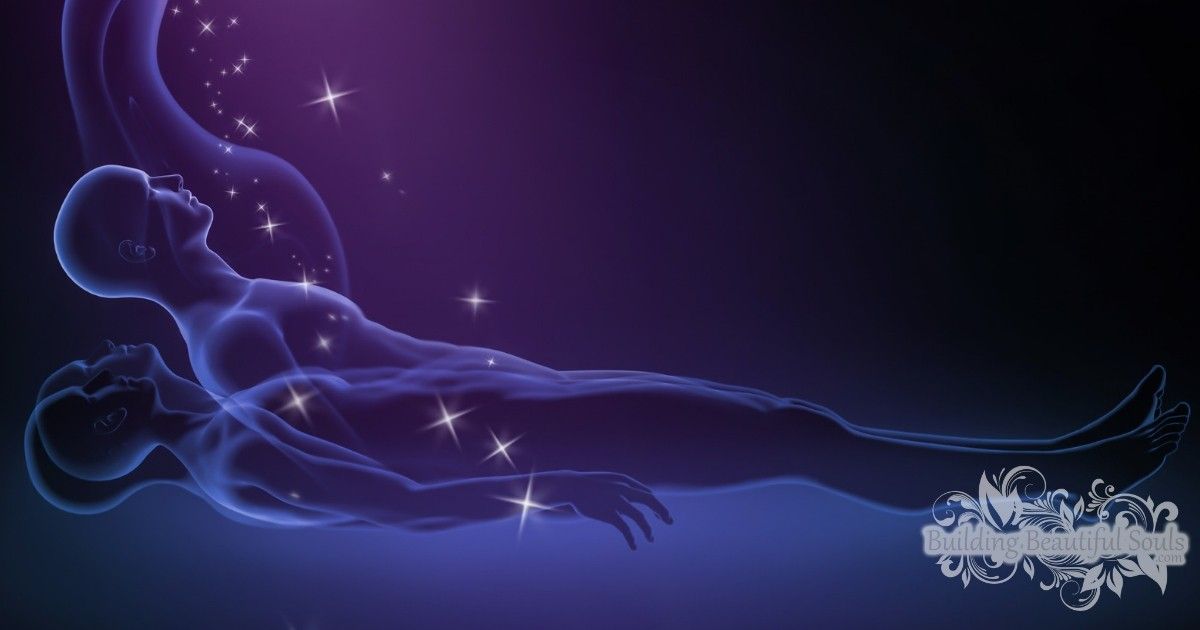
For those who have never had a lucid dreaming experience, the question, “Are lucid dreams real,” is valid. Lucid Dreams occur when you are “lucid” or aware of the fact you are experiencing a dream. There is full awareness of being asleep. In a lucid dream, the dreamer has freedom. Thus, the individual manipulates scenarios to see how things work out.
These dreams allow the dreamer to explore the dream scene. Then, they can attempt to change the outcome of the dream. It will enable an individual to test scenarios. This skill lets a person explore potential consequences in the safety of the dream arena.
You can interact with other people, places, and things in the dream at will. When this happens, some dreamers like to explore the dream scene. It takes practice to change what is happening or to test the waters. It may also take a few minutes to determine if they are in a lucid dream state or if it is a trick of the mind.
Lucid Dreams often allow you to see yourself in your full body form. In regular dreams, this is not always the case. During a lucid dream, you might be able to read and recall something. But, in a regular dream, you will often find word recall far more difficult. Attempting to read or view your full physicality is one way to examine your current dream state.
Mutual Dreams?

The answer to the question, “what are mutual dreams” is simple. Mutual Dreams occur when two or more people have a “shared dream” experience. In fact, the terms “mutual dreams” and “shared dreams” are interchangeable.
Sometimes the dreams occur on their own. More often, dream experimenters attempt to incubate and control the mutual dream experience. How? Because they agree to meet each other within the dream scenario. Shared Dreams can also occur more often between couples and twins. Why? Because there is a rich emotional connection between the pairings. In fact, with mutual dreams, two heads are better than one!
Narrated Dreams

Imagine entering a dream and hearing a voice instructing you step-by-step. The voice relays what is going on in the dream, what you are witnessing, or what your dream means. You might ask, “What does hearing voices in dreams mean?”
Dreams with voices in the background or talking to the dreamer are narrated dreams. Often, in a narrated dream, you will be an observer standing outside of the dream. You’re watching the scene as if you are watching television. You may see the person narrating. Alternatively, you might experience the voice as coming from nearby without seeing who speaks. With narrated dreams, your Higher Self wants you to concentrate on the message. The narration is to reiterate its importance.
Are Nightmares Dreams?
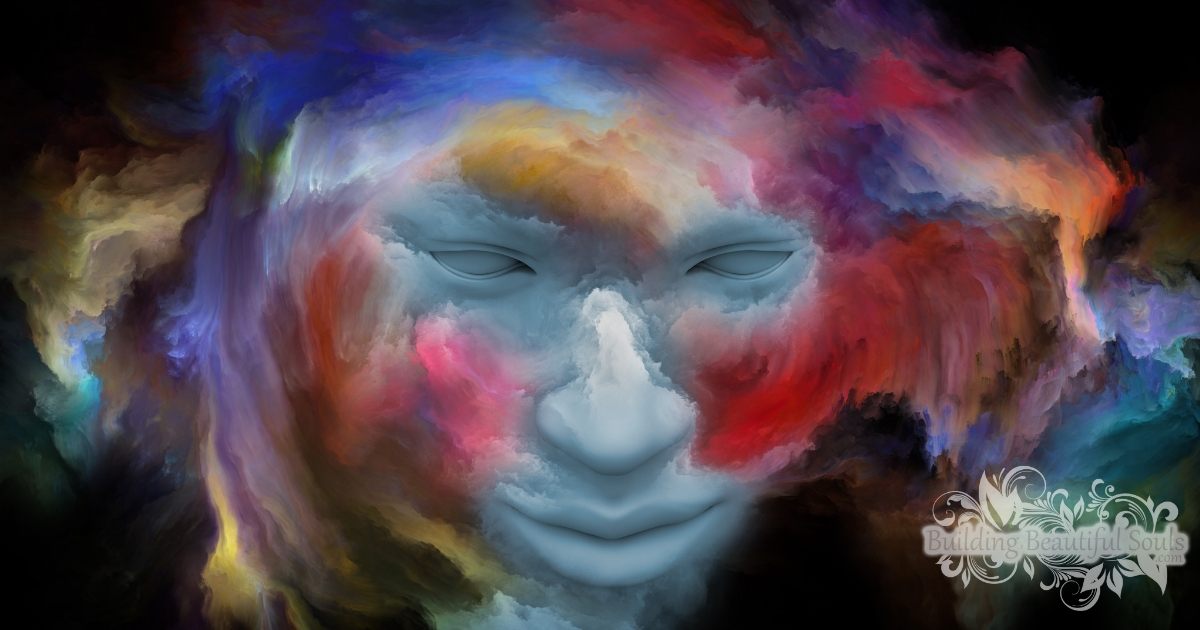
Ah, the dreaded nightmare; no one cares for them. But, are nightmares dreams or are they some anomaly stemming from brain activity? If nightmares are dreams, what do they mean? Moreover, why do we have nightmares at all?
Everyone has one or more nightmare experiences. These dreams occur when you see terrifying imagery. The dream scenario might involve a chase scene or someone threatening your safety. But, nightmares can also include visions of catastrophes and personal phobias. Or, they might involve monstrous scenes. Of course, the reasons for nightmares vary.
Suspect causes of nightmares include food, medications, diseases, and sleep disorders. Finally, stress is another contributor, but can also prove one of the most significant contributors to the onset of nightmares.
Waking from a nightmare is an abrupt experience. Of course, it is less likely you will forget the frightening images before you open your eyes. If you can think about the dream upon waking, you’ll find the imagery memorable. Thus, the message the dream is sharing is a message you will have a better chance at retrieving from the dream realm.
Especially relevant to dream interpretation is the quality of dream recall. Frightening and disturbing images are more vivid. As such, you are more likely to remember what you’ve seen once you wake.
Nightmares are types of dreams where we experience, what Carl Gustav Jung calls, our shadow. It’s the darker aspect of our personality we avoid as much as possible, as if afraid to embrace it. But, our shadow self is an important part of our wholeness as an individual. It is the basis for many of our personal, positive characteristics. To experience the shadow self is a chance to embrace it and to learn from it. Acknowledging the shadow self from time to time keeps the shadow self in check as well.
Night Terrors

The answer to the question “Are night terrors dreams” might surprise you. Since these events occur during non-REM stages of sleep, night terrors are not dreams. Still, many people confuse night terrors for nightmares. These experiences are a sleep disorder.
The person sleeping gets stuck between a sleep and waking state. Consequently, the stress of the experience causes a reaction where the individual screams. As a result, it seems impossible to console the dreamer. For the most part, the disorder is something happening to a child under 12 years of age.
Night terrors can last anywhere from a few minutes to a half hour or more. The person afflicted does not remember what has happened when they finally awaken. Most noteworthy is the fact that adults are not usually afflicted with night terrors. But, it has happened and may have something to do with a sleep disorder, or the medication the adult is taking.
Out-Of-Body Dreams (OBEs)?
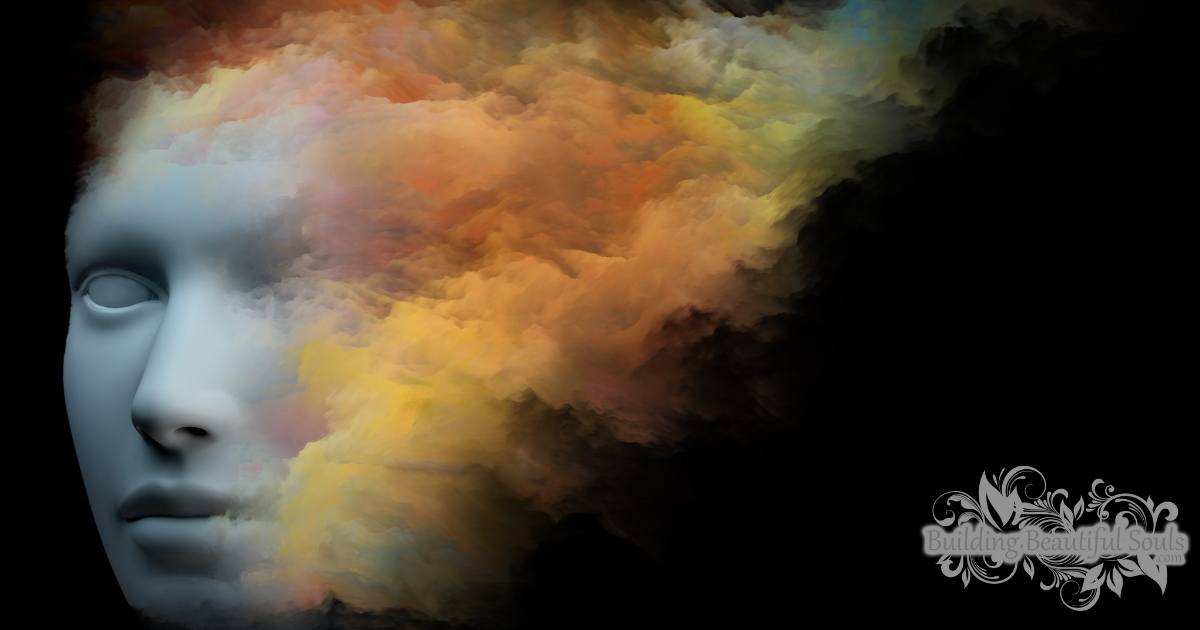
Out-of-Body Dreams (OBEs) are events in which the person’s soul or astral body escapes the body. These dream-like scenes are also known as astral travel or astral projection. A silver cord keeps the spirit connected to the body at all times, ensuring the soul’s ease of return.
The astral body is free to roam around and act in the physical. Stress can cause the condition to happen automatically. But, one can induce an OBE with the mind alone. Most importantly, an OBE allows a person to learn about the self.
Precognitive Dreams and Psychic Dreams

Symbolic precognitive dreams letting you gain information about a future event are common. Throughout history, some people have reported dreams later proving to contain psychic information. Precognitive is a term suggesting foreknowledge of events. But, the dreamer doesn’t realize a dream is precognitive until the events foretold occur.
Abraham Lincoln had several dreams which then had true elements in real life. Once such dream was recurring where you saw an ominous ship sailing on the ocean. He wrote of the ship as being something he saw “sailing toward a dark and indefinite shore.” The dream of the ship also appeared to him in where he was sailing rapidly into an unknown direction. Both dreams held ominous connotations. Also, in another dream, Lincoln dreamed of being in the White House while people were mourning the death of the President.
Instances of precognitive dreams have been reported throughout history. As another example, some people had dreams of the Titanic sinking before it sailed and, as such, (and wisely so), they decided not to journey on the vessel. Some researchers argue against the possibility of precognition, of course, pointing to false memories, deja vu, retrocognition, and other reasons for such experiences.
Recurring Dreams

They are the same dream scenario or narrative experience happening with a varying degree of frequency. A dreamer might have a recurrent dream starting from childhood into adulthood, where they remember similar dream experiences over the course of several years. Other times, recurrent dreams occur over a shorter time span.
Some theories offer the explanation for these dreams as being related to some sort of traumatic experience seeking resolution. Others suggest recurring dreams are the result of the subconscious, Higher Mind, or Divine attempting to get the dreamer’s attention. The reoccurring dream is an experience believed to carry a message of extraordinary import for the dreamer.
Sentient Dreams

People who have never had a visual experience will have sentient dreams. For instance, someone born blind will have dreams where they can hear and feel the stimuli in the dream narrative. Those who are born with vision, but who lose it, later on, may also experience sentient as well as visual dreams. Sentient dreams can, therefore, fall under the category of auditory dreams if the experiences have sound components, or narrated dreams if the dreamer hears someone speaking to them.
Sexual Dreams

Perfectly natural are the dreams of a sexual nature. They are more common in teens and might occur as the teen begins to explore their sexuality. Some dreams of sex in adults are wish fulfillment dreams. Both men and women have dreams with sexual content. About eight to ten percent of dreams have some sexual content in them. These dreams might also be triggered by viewing media containing sexual content. If the dream also contains emotional elements, the sex dream fits under the visual and emotional dream types.
Visual Dreams

It may seem needless to say that one type of dream category is the visual dream. Some people may even be surprised to discover some people never have a visual dream in their lifetime. The visual dream is a broad category covering the majority of dreams. They refer to what the dreamer sees while sleeping, whether it’s pugs and moon pies or the man on the moon! But, people who are blind at birth do not have visual dreams. Instead, their dreams are filled with auditory experiences and sensations from the other senses which make up the difference for the absent sight!
Wish Fulfillment Dreams
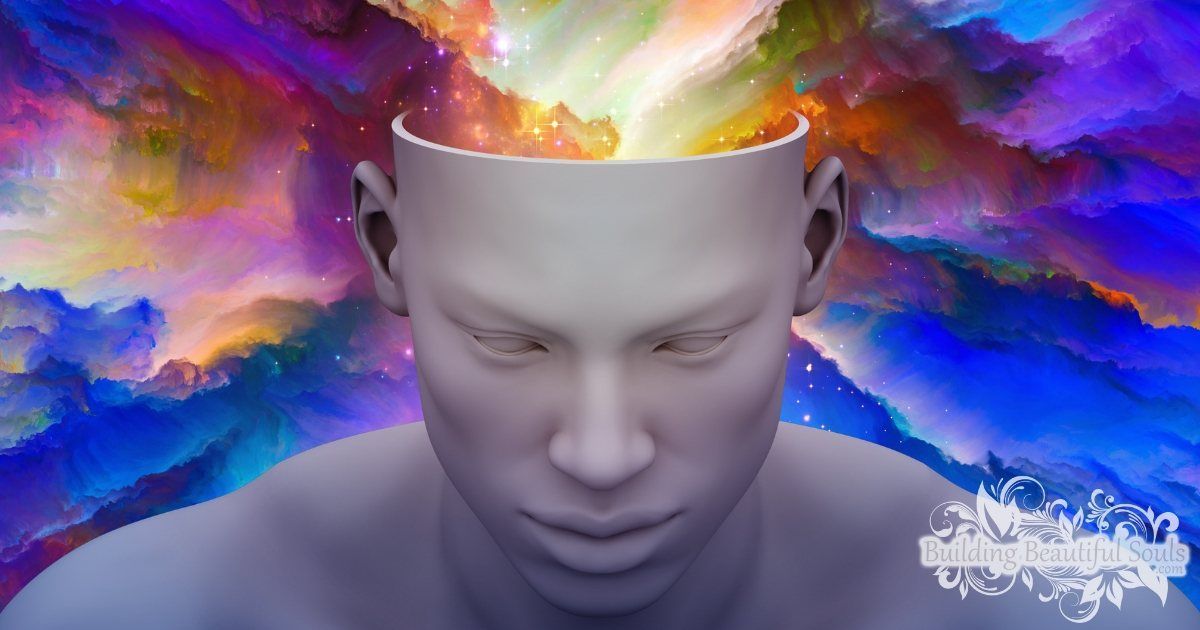
The things we cannot have in our waking hours can crop up as desires in our dreams. In the dream realm, what we crave or long for, we can attempt to fulfill. When fulfilling wishes in a dream scenario, it’s akin to running a safe experiment in the dream arena. The dreamer can experience things at a safe emotional distance. Potential outcomes of various scenarios are also something one can examine.
Wish fulfillment dreams might be about the wishes and hopes we had as a child. Rather, the dream narrative might be about things we covet in our adulthood. Your mind may cope by presenting you with wish fulfillment dream narratives as well. Furthermore, dreams of a sexual nature will often present as wish fulfillment narratives.
The Final Takeaway: So Many Dream Types, So Many Rich Dreaming Experiences!
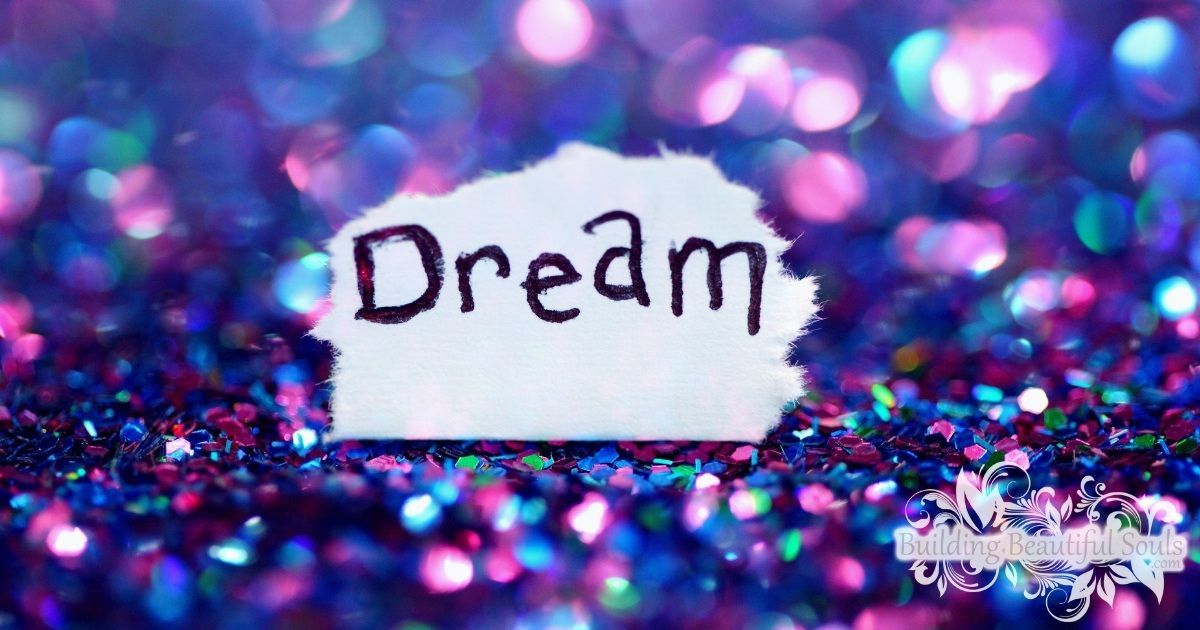
Whew! The types of dreams people experience seems near exhaustive. But, it reveals the diversity of the symbols and images you can encounter. Retrieving information from the collective unconscious requires learning a new language! Hence, you’ll be mastering symbols and archetypes while exploring types of dreams as you learn about yourself.
I encourage you to categorize your dreams. First, to begin the categorization process, you’ll have to become familiar with the types of dreams you’re experiencing. It can teach you so much about yourself and the habits of your dreaming mind! If you have trouble remembering all the types of dreams you can experience, feel free to bookmark this page. Return to it when you need a reference of dream types. Or, use it to study the types of dreams and commit them to memory. Remember, the more work you do with memory, the better you will be at dream recall!
Studying the types of dreams you have and dream meanings can change your life. Dream interpretation may add a new layer of meaning to your day-to-day existence. As a result, as you develop your understanding of symbols, the meaningful way your dreams convey messages will also improve.
Ultimately, you can count on it intensifying the meaning of every waking hour you experience! Through dreams, you gain the gift of insight, all of which you can use to build your beautiful soul! Learn more about what the dream realm has to teach you. Check out all the dream information on Building Beautiful Souls today!

